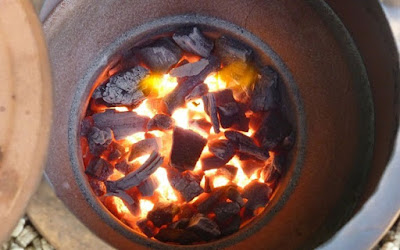Tandoori Cuisines are bliss
Cooking is not about precise capacities or exact methods; instead of food is a ‘skill with heart’ of slightly ensuring a recipe, going with approaches and alteration if required. Cooking encompasses devoted to yourself and the ones you cook for, and food means that you are learning the satisfactory art of making somewhat categorically beautiful; exceedingly like parentage.
What is Tandoor?
Well, to be specific a Tandoor is the conventional oven of India made from clay, like a giant earthen pit. A Tandoor cab is used both for cooking and baking. The heat in a Tandoor is used for food usually comes from charcoal or firewood. This heat is strewn throughout the earthenware walls of the oven which can reach up to 600°F. The top of the Tandoor frequently remains open to allow for access and ventilation.
Origin
Firstly, Tandoori cooking invented in ancient Harappa and Moenjodaro; it is also extensively supposed that Tandoors, seeing back almost 2500 years, were disinterred in Rajasthan, India.The paramount Tandoors were used to bake flatbread, a custom that endures in the sub-continental Roti, Turkmen chores and Afghan naan.
Firstly, Tandoori cooking invented in ancient Harappa and Moenjodaro; it is also extensively supposed that Tandoors, seeing back almost 2500 years, were disinterred in Rajasthan, India.The paramount Tandoors were used to bake flatbread, a custom that endures in the sub-continental Roti, Turkmen chores and Afghan naan.
The agonizing heat and smoke, and moisture-absorbent possessions of the Tandoor, make it equally actual for sweltering meat on vertical skewers, a fragility mentioned by the Indian surgeon Sushruta as early as the eighth century B.C. Shah Jahan, the eminent Mughal emperor who built the TajMahal, held the Tandoor in such high admiration he had a convenient metal model of tandoor created to take on his travels, just to make his favorite tandoori cuisines like chicken and lamb dishes.In spite of its ancient origins and absolute ease, the Tandoor produces shockingly suave results, including with smoky flat breads that puff like pillows, and roasted meats of infrequent tastiness.
In the Tandoor, food is wide-open to
live fire convection cooking; meats are pierced on a metallic spit and positioned
into the oven with intense heat; fat and juices from the meat trickle on the
wood or charcoal are totaling a different flavour to its smoke. In most ‘Dhabas’
(wayside restaurants), bread is placed along the verges of the clay oven while
the meat is baked.
Tandoori cuisine is frequently recognised
with Punjab. Rural villages have shared Tandoors, a lucrative way to feed large
groups of people because the fire leftovers lit for long periods of time. The Dhabas offer the best tandoori fare, and some have been helping the same recipes
since the early 20th century. Punjabis relocated to India after the 1947 barrier
and brought their traditional tandoori cooking with them making the Tandoor
essential to most local restaurants throughout the country.
Even the writer of the New York Times, Steven Raichlen, debates the beginning of the Tandoor and its feast to the world in his article high-minded, A Tandoor Oven Fetches India's Heat to the Patio;
Techniques
Tandoori cooking mainly uses four different
methods. Direct heat rises from the charcoal, a process akin to grilling. The
hot clay walls of the oven cook bread, similar to grilling or Skillet-roasting.
Glowing warmth in the belly of the Tandoor harvests results identical to
convection baking. And smoke, which occurs as the flavour and meat juices drip
onto the hot coals, adds perfume and taste.
Formerly, meat was not cooked in
Indian Tandoors because it was difficult to realise adequate tender bruising.
However, under the procedure of marvellous meat fixings such as lemon juice,
yoghurt, raw papaya and raw pineapple, meat was obtainable to the heat of the Tandoor.
Benefits from Cooking in a Tandoor Oven:
• It
gives the food a particular flavour.
• It
is Oil/ Fat-free
• The
essence of the meat cooked in it are sealed in
• There
is no loss of vitamins or minerals are the cooking process
• Healthy
and easy food grounding
• No
fuel/gas used
• Short conservation
Follow this blog to stay tuned with us & know about different modern trends in catering industry.
Click here to know more about us
Follow this blog to stay tuned with us & know about different modern trends in catering industry.
Click here to know more about us



Comments
Post a Comment